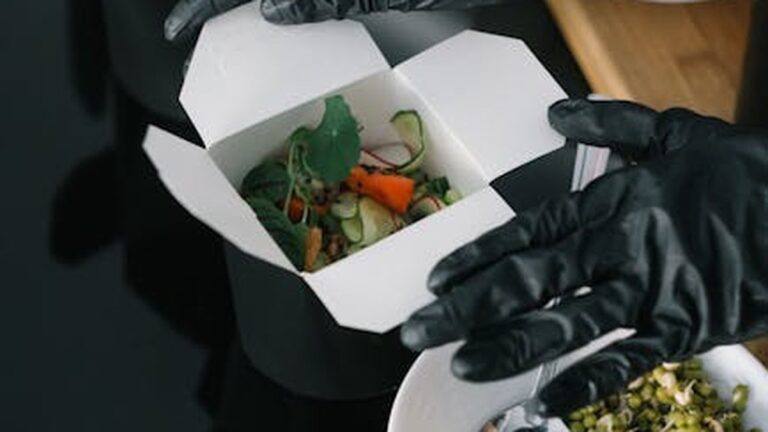Winter Hydration: Electrolyte Balance
Winter often brings images of cozy fires and warm drinks, but it’s also a time when dehydration can sneak up on us. While we might associate dehydration with hot summer months, the cold, dry air of winter, coupled with indoor heating, can significantly impact our hydration levels. More importantly, maintaining proper electrolyte balance during winter is crucial for overall health and well-being. This guide delves into advanced hydration techniques specifically tailored for the winter season, focusing on optimizing electrolyte balance for peak performance and health.
Understanding Winter Dehydration
Why is Winter Hydration such a concern? Several factors contribute to increased dehydration risk during the colder months:
- Dry Air: Cold air holds less moisture, leading to increased water loss through respiration.
- Indoor Heating: Central heating systems further dry out the indoor environment, exacerbating water loss.
- Decreased Thirst Response: Colder temperatures can blunt our thirst sensation, making us less likely to drink enough water. Studies show that the body’s thirst mechanism isn’t as sensitive when the ambient temperature is low.
- Increased Physical Activity: Winter sports like skiing, snowboarding, and even shoveling snow can lead to significant fluid loss.
- Increased Diuretic Effect: Some believe that cold air causes increased urination, although the scientific evidence on this is mixed. However, drinking warm beverages, like tea and coffee, to stay warm can have a diuretic effect.
These factors combined create a perfect storm for dehydration, which can lead to fatigue, headaches, decreased cognitive function, and even more serious health issues. It is critical to practice Winter Dehydration Prevention.
The Importance of Electrolytes in Winter
While water is essential for Winter Hydration, it’s not the whole story. Electrolytes, such as sodium, potassium, magnesium, and calcium, are minerals that carry an electrical charge and play vital roles in numerous bodily functions, including:
- Muscle Function: Electrolytes are crucial for muscle contractions and preventing cramps, especially important during winter activities.
- Nerve Function: They facilitate nerve impulses, ensuring proper communication between the brain and the body.
- Fluid Balance: Electrolytes help regulate fluid distribution throughout the body, preventing both dehydration and overhydration.
- Blood Pressure Regulation: Sodium and potassium play key roles in maintaining healthy blood pressure.
During winter, electrolyte imbalances can be exacerbated by:
- Sweating during exercise: Even in cold weather, physical activity leads to electrolyte loss through sweat.
- Dietary changes: Winter diets may be lower in fruits and vegetables, which are good sources of electrolytes.
- Illness: Vomiting and diarrhea, common during winter flu season, can lead to significant electrolyte depletion.
Recognizing Electrolyte Imbalance
It’s important to be aware of the signs of electrolyte imbalance:
- Muscle cramps or spasms
- Fatigue and weakness
- Headaches
- Nausea and vomiting
- Irregular heartbeat
- Confusion or disorientation
If you experience any of these symptoms, especially during or after physical activity, it’s important to address your hydration and electrolyte levels.
Advanced Hydration Strategies for Winter
Moving beyond simply drinking water, here are some Advanced Hydration Strategies to optimize your hydration and Electrolyte Balance Winter:
- Strategic Water Intake: Don’t wait until you’re thirsty to drink. Aim to sip water throughout the day. Use a reusable water bottle to track your intake.
- Electrolyte-Rich Drinks: Supplement water with Electrolyte Drinks Winter. Look for options with sodium, potassium, and magnesium. Avoid sugary sports drinks and opt for lower-sugar alternatives or homemade electrolyte solutions.
- Nourishing Foods: Incorporate electrolyte-rich foods into your diet:
- Potassium: Bananas, sweet potatoes, spinach
- Sodium: Pickles, olives, broth-based soups
- Magnesium: Dark leafy greens, nuts, seeds
- Calcium: Dairy products (if tolerated), fortified plant-based milks, leafy greens
- Hydrating Warm Beverages: While coffee and tea can have a diuretic effect, they can still contribute to overall fluid intake. Opt for herbal teas, bone broth, or warm water with lemon and honey. Consider adding a pinch of sea salt to these beverages to enhance electrolyte intake.
- Humidify Your Environment: Use a humidifier to add moisture to the air, especially in your bedroom, to combat the drying effects of indoor heating.
- Monitor Urine Color: A pale yellow color indicates adequate hydration. Dark yellow or amber urine suggests dehydration.
- Hydrate Before, During, and After Exercise: Adjust your fluid and electrolyte intake based on the intensity and duration of your winter activities.
Homemade Electrolyte Drink Recipe
Creating your own electrolyte drink is a cost-effective and healthy way to replenish electrolytes. Here’s a simple recipe:
- 1 liter of water
- 1/4 teaspoon of sea salt
- 1/4 teaspoon of potassium chloride (optional, can be found in salt substitutes)
- 2 tablespoons of lemon or lime juice
- 1-2 tablespoons of honey or maple syrup (optional, for taste and energy)
Mix all ingredients thoroughly and sip throughout the day.
Case Studies and Examples
Case Study 1: The Winter Athlete. A cross-country skier training in a cold climate experienced frequent muscle cramps despite drinking water regularly. They started incorporating electrolyte-rich drinks and foods into their diet, which significantly reduced the frequency and severity of their cramps. This demonstrates the importance of electrolytes, even when not feeling particularly thirsty due to the cold.
Example 2: The Office Worker. An office worker suffering from chronic headaches during the winter months realized they were not drinking enough water due to the lack of perceived thirst. They started keeping a water bottle at their desk and consciously sipping throughout the day. They also started using a humidifier in their office. The headaches significantly diminished after a week.
Optimizing Hydration for Specific Winter Activities
The specific hydration needs vary depending on the activity:
- Skiing/Snowboarding: Due to the high altitude and exertion, pre-hydrate well and carry a hydration pack.
- Shoveling Snow: This strenuous activity can cause significant fluid loss. Take frequent breaks to hydrate and replenish electrolytes.
- Indoor Activities: Even if you’re not physically active, remember to hydrate regularly to combat the drying effects of indoor heating.
Conclusion: Prioritizing Winter Hydration for Optimal Health
Optimizing Hydration Winter isn’t just about drinking enough water; it’s about understanding the unique challenges of the season and implementing Advanced Hydration Strategies to maintain proper fluid and Electrolyte Balance Winter. By being proactive about your hydration, incorporating electrolyte-rich foods and drinks, and adjusting your strategies based on your activity level, you can stay healthy, energized, and perform at your best throughout the winter months. Don’t let dehydration derail your winter fun; prioritize Winter Hydration for a healthier and happier season.
References
-
Centers for Disease Control and Prevention (CDC)
– Leading national public health institute of the United States. -
World Health Organization (WHO)
– Global authority on international public health. -
Mayo Clinic Healthy Lifestyle
– Evidence-based health advice from medical experts.






